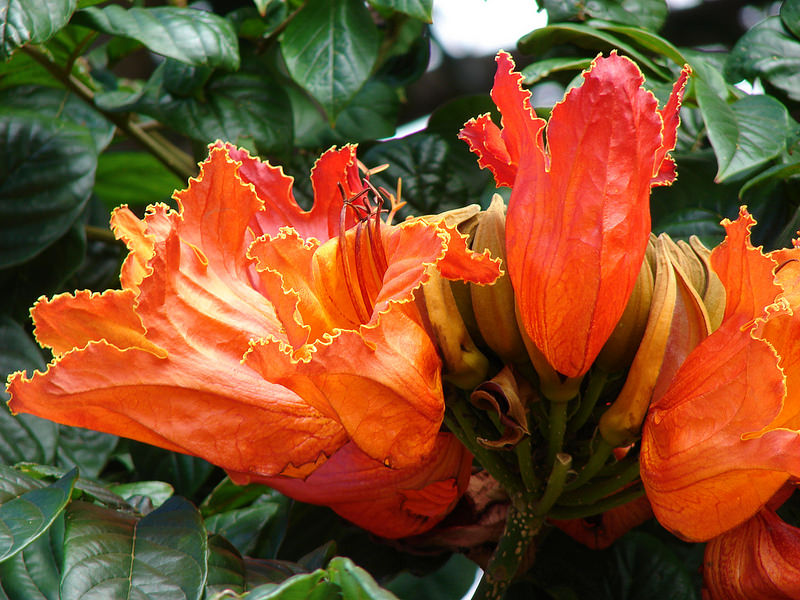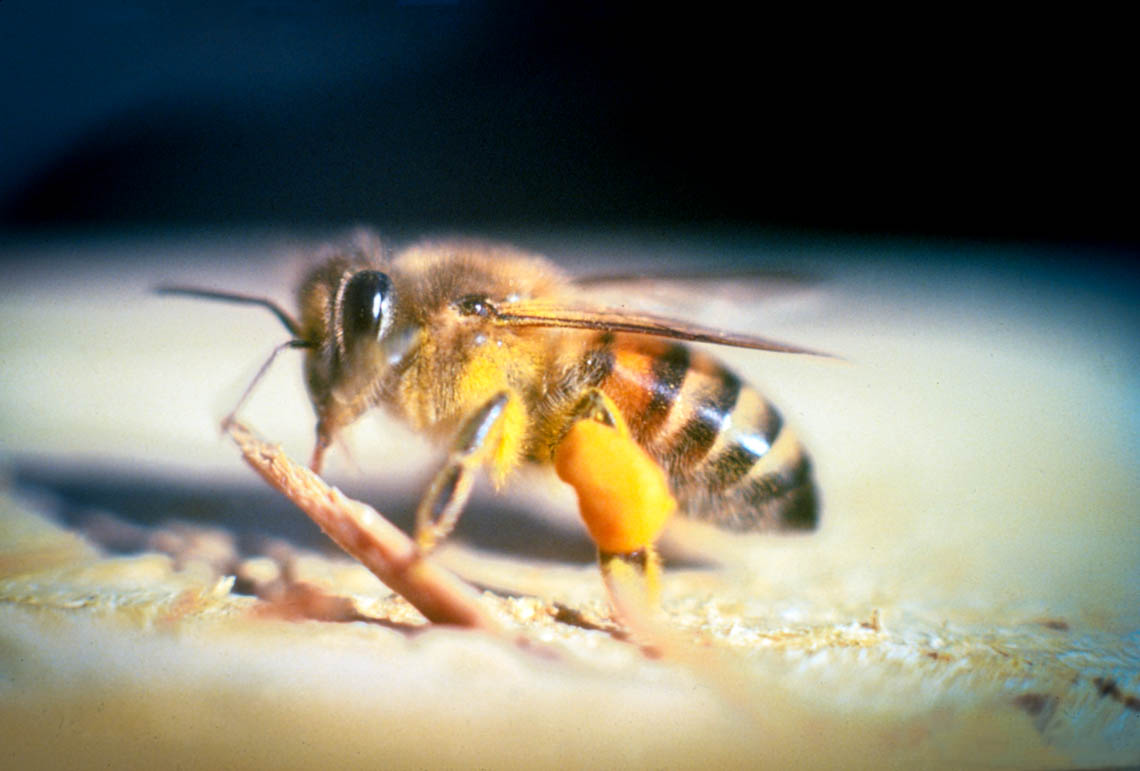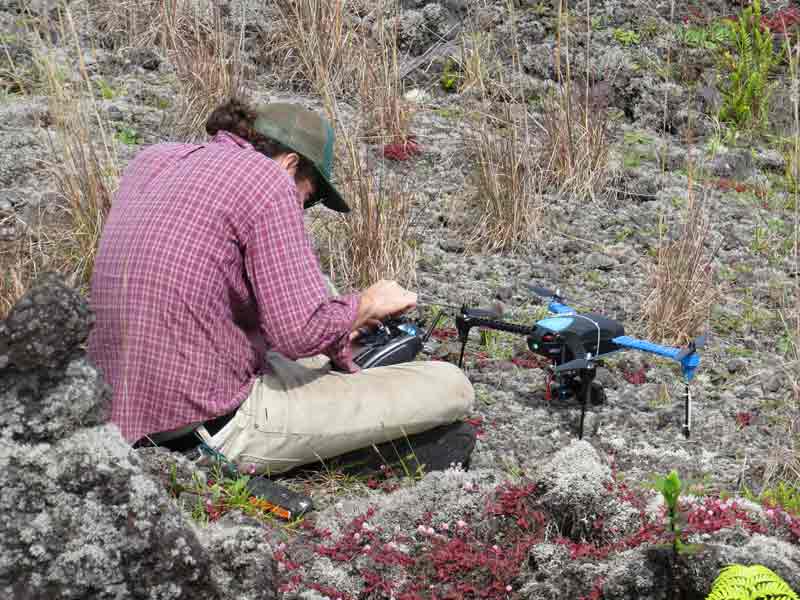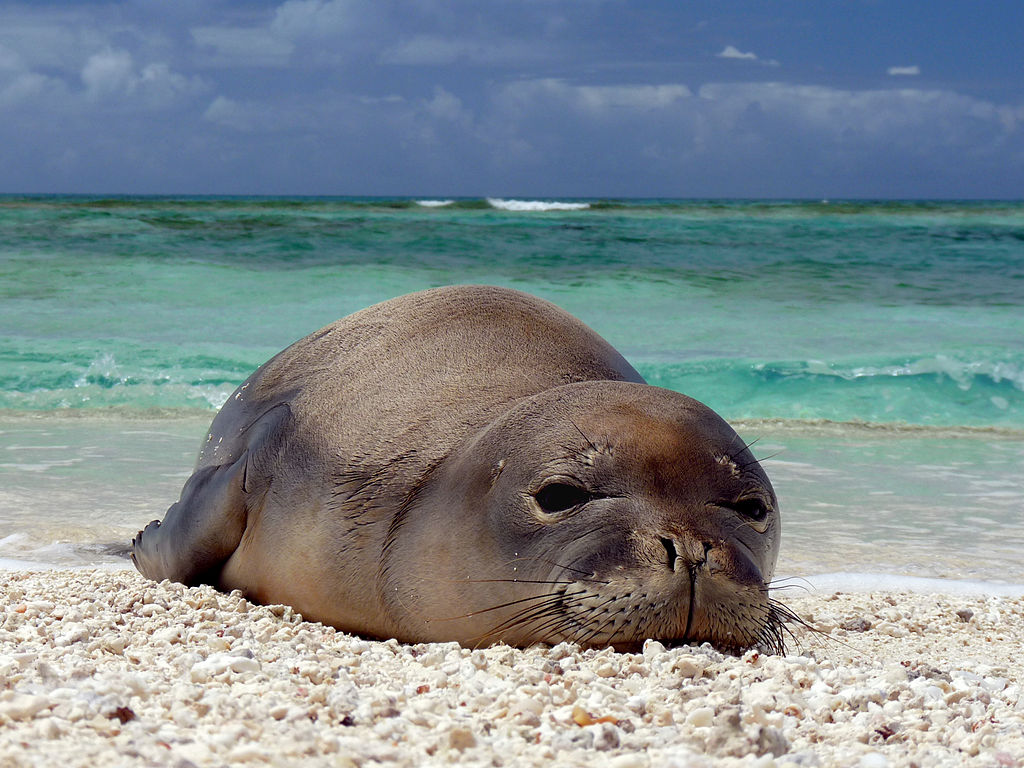Amidst a black canvas of young lava, plant-like bacteria grow…..painting a gold border that divides the brilliant green plants from…
Read More
2017
African Tulip Tree
An African tulip tree in bloom is a remarkable burst of color. Consequently, the tree has earned many monikers: flame…
Read More
Africanized honey bees could threaten Hawaiian honeybee populations
In 2011, alert harbor workers in Honolulu noticed bees inside a container of medical supplies shipped from Long Beach California….
Read More
Drones help field crews find invasive species
Your mission: find a few invasive silk oak trees scattered across a 35,000-acre ancient cinder cone that resembles a bundt…
Read More
Parasite spread by cats threatens rare native animals
As populations of invasive feral cats skyrocket in Hawaiʻi, so does the risk to native animal species. The ʻalalā,…
Read More





